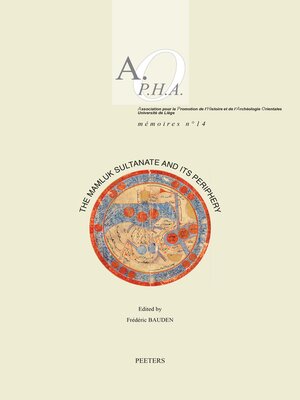The Mamluk Sultanate and its Periphery
ebook ∣ Association pour la Promotion de l'Histoire et de l'Archeologie Orientales. Memoires
By F Bauden

Sign up to save your library
With an OverDrive account, you can save your favorite libraries for at-a-glance information about availability. Find out more about OverDrive accounts.
Find this title in Libby, the library reading app by OverDrive.



Search for a digital library with this title
Title found at these libraries:
| Library Name | Distance |
|---|---|
| Loading... |
This volume is the result of a selection of papers presented at the second conference of the School of Mamluk Studies (Liege, 2015) whose theme was 'The Mamluk Sultanate and Its Periphery'. It is well known that Mamluk studies suffer from a deficit of interest for the peripheral areas because of the centripetal effect played by the main cities of the sultanate, i.e. the political centers (Cairo and Damascus), where most of the historians whose works constitute the lion's share of modern studies lived. Nevertheless, it is still possible to study aspects related to regions, cities, villages by resorting to these classical sources but also and above all to other types of sources (documents, archaeological excavations). Obviously, the concept of periphery can be interpreted in various ways. Above all, it is understood in geographic, political, or economic terms: the periphery is defined in relation to the center of power, whether central or local. It can also be interpreted in sociological and religious terms. In this case, the concept can be applied to practices or parts of the society considered borderline. The eight essays collected in this volume seek to explore this question of the periphery from these various angles.







